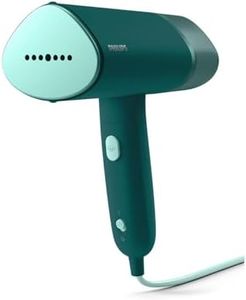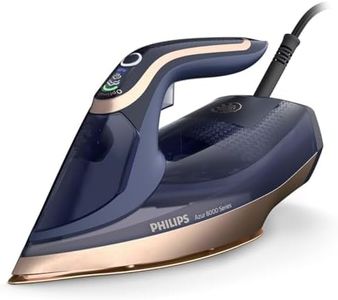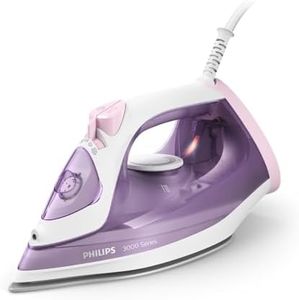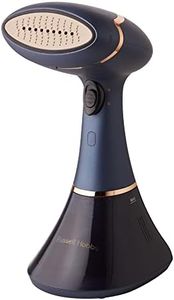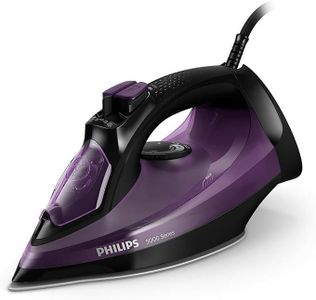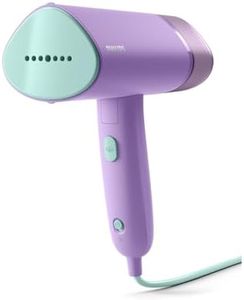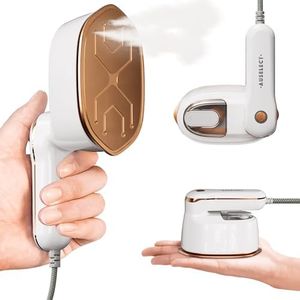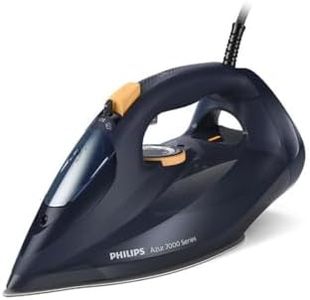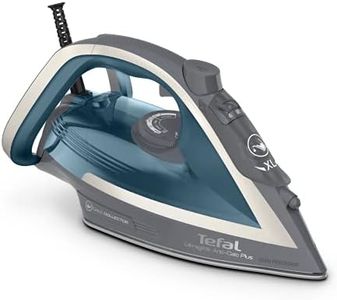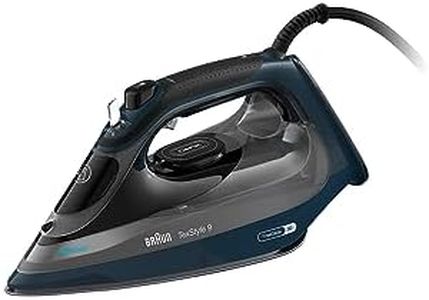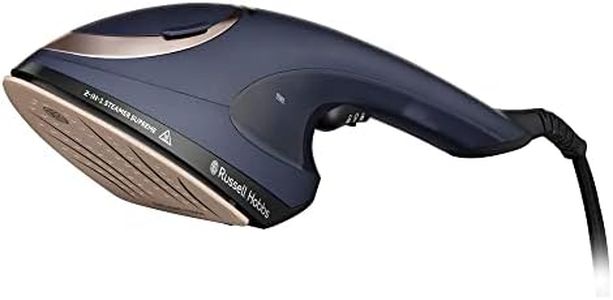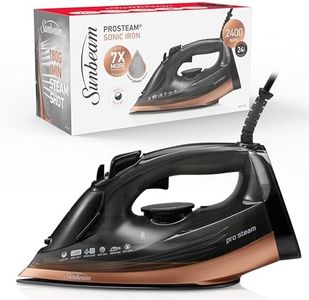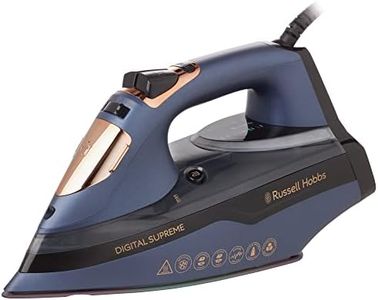We Use CookiesWe use cookies to enhance the security, performance,
functionality and for analytical and promotional activities. By continuing to browse this site you
are agreeing to our privacy policy
10 Best Clothes Irons
From leading brands and best sellers available on the web.Buying Guide for the Best Clothes Irons
When choosing a clothes iron, your goal is to find a device that removes wrinkles effectively, is comfortable to use, and suits your typical ironing load and fabric preferences. With a wide range of options on the market, focusing on key features can help you make a confident choice. Consider what types of clothing you iron most and how often you use the iron—these factors will help you decide what specifications matter most for your needs.WattageWattage tells you how powerful the iron is. Higher wattage usually means the iron heats up more quickly and can produce more steam, which helps to remove wrinkles faster. Irons with lower wattage (around 1000-1500W) might suit light ironing duties or delicate fabrics, while those with higher wattage (1600W and above) are better for frequent or heavy-duty ironing, such as cotton shirts or linens. Think about how demanding your ironing tasks are to choose the right wattage.
Soleplate MaterialThe soleplate is the flat surface that touches your clothes. Common materials include stainless steel, ceramic, and non-stick coatings. Stainless steel is durable and glides smoothly, making it a good all-rounder. Ceramic heats evenly and is less likely to stick to fabrics. Non-stick coatings are designed to prevent clothes from clinging to the plate. For everyday versatility, stainless steel or ceramic is recommended, but if you often iron delicate items, a non-stick option can add peace of mind.
Steam OutputSteam output refers to how much steam the iron releases, either continuously or in bursts. More steam helps to relax fabric fibers and makes wrinkle removal easier, especially on thick or stiff fabrics. Light duties or synthetic materials don't need as much steam, but if you work with cotton, linen, or large loads, a higher steam output (measured in grams per minute) makes ironing faster and easier. Think about the fabrics you usually iron and pick a steam level that matches.
Water Tank CapacityWater tank capacity tells you how much water the iron can hold, which affects how long you can iron with steam before needing to refill. Smaller tanks (under 250ml) work for short sessions or infrequent use, while larger tanks (300ml or more) are helpful for extended ironing or bigger laundry loads. If you dislike frequent refilling, look for a model with a bigger tank.
Weight and ErgonomicsThe weight of an iron impacts how easy it is to handle. Heavier irons give you more pressing power with less effort, which helps press tough creases, but may lead to fatigue during long sessions. Lighter irons are easier to move and control, especially for quick touch-ups or if you have wrist issues. Consider your comfort and strength—choose an iron you can easily hold and maneuver for the types of ironing you do.
Temperature ControlTemperature control allows you to set the right level for different fabrics, protecting delicate items and ensuring thick materials get enough heat. Simple dials with fabric labels are easy for basic needs, while digital controls give more precision. If you iron a wide range of fabrics, precise control is useful—otherwise a basic control will usually suffice.
Auto Shut-OffAuto shut-off is a safety feature that turns the iron off automatically if left idle for a certain time, preventing accidents and saving energy. If you’re cautious or tend to get distracted while ironing, this feature adds peace of mind and should be considered a priority.
Cord Length and SwivelCord length affects how much freedom you have to move while ironing, especially if your power socket is far from your ironing board. A longer cord (around 2 meters) or a swivel feature makes it easier to reach all areas of your clothes and avoid tangling. If your setup is fixed or you iron in a tight space, cord flexibility matters less, but for larger areas, more length helps.
